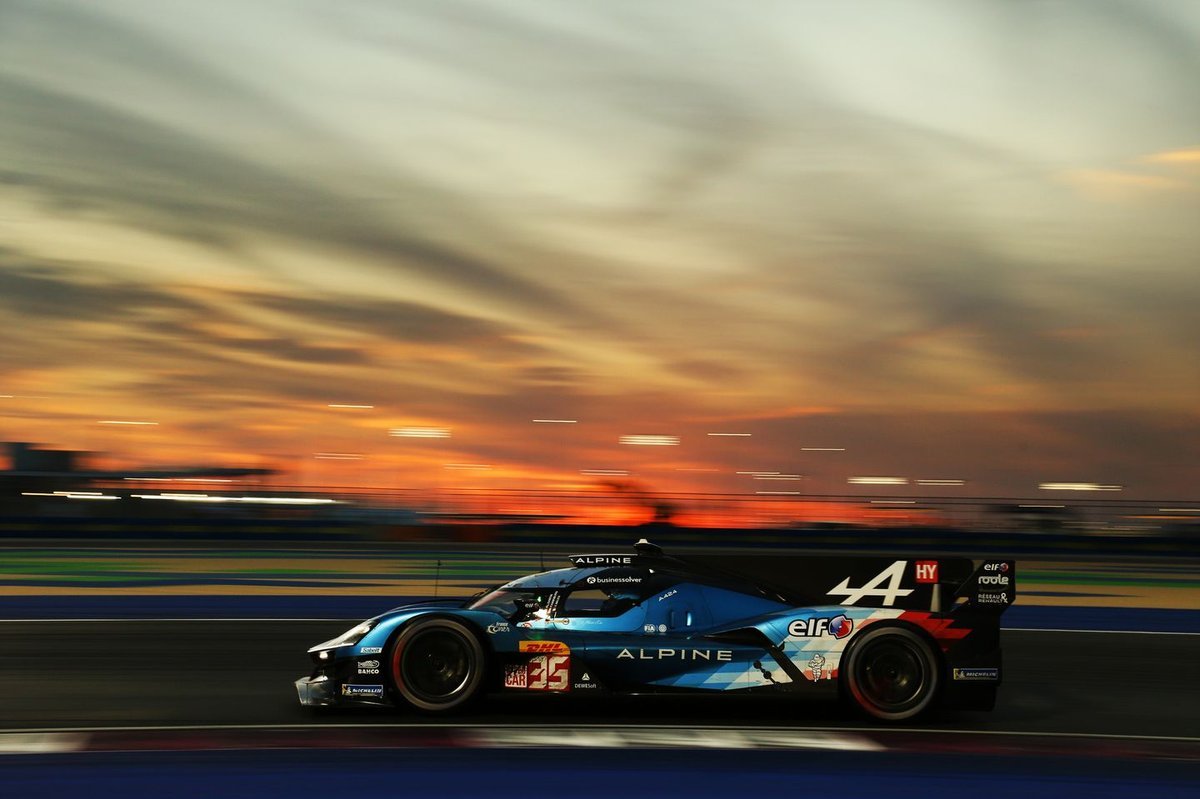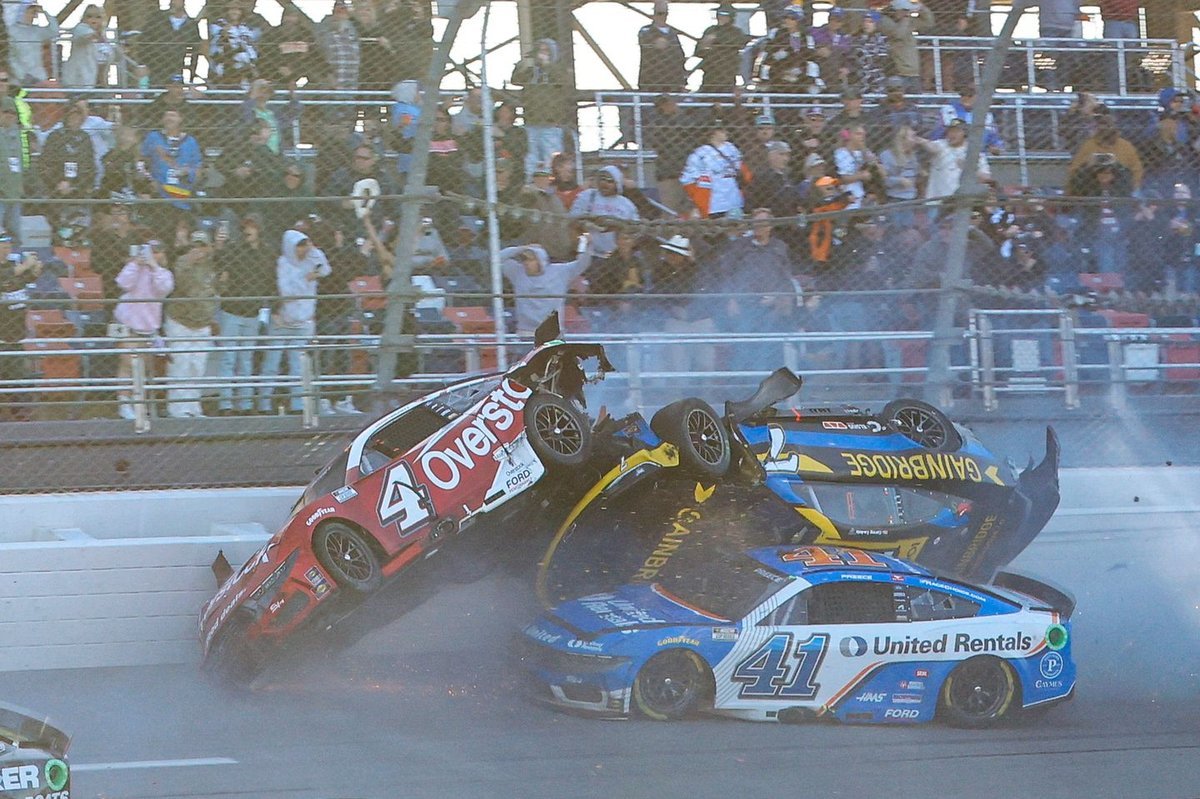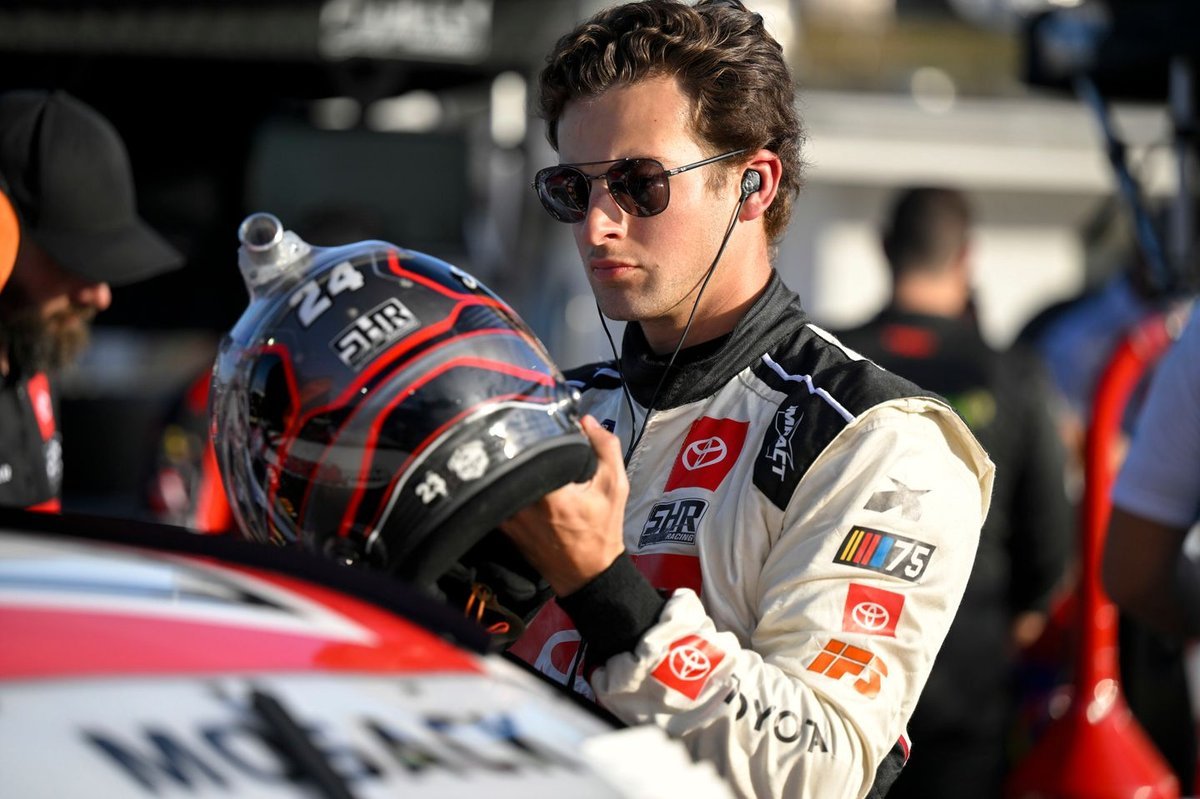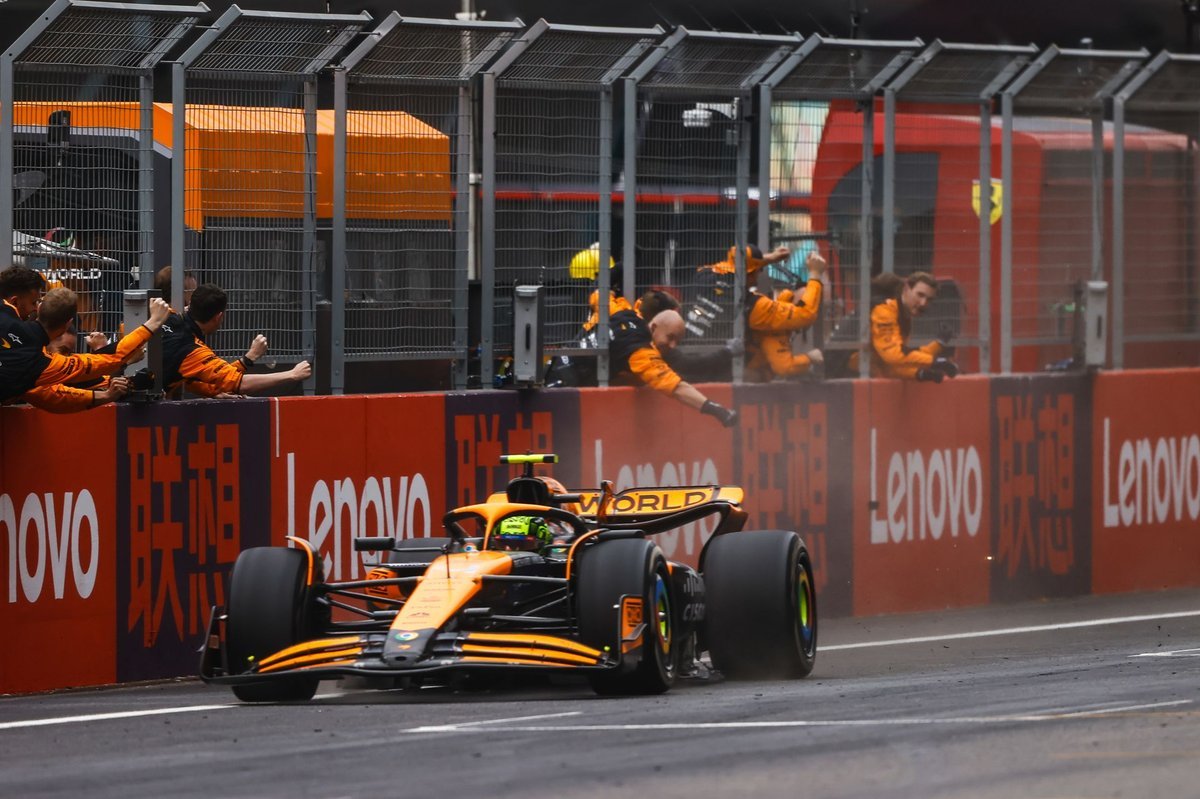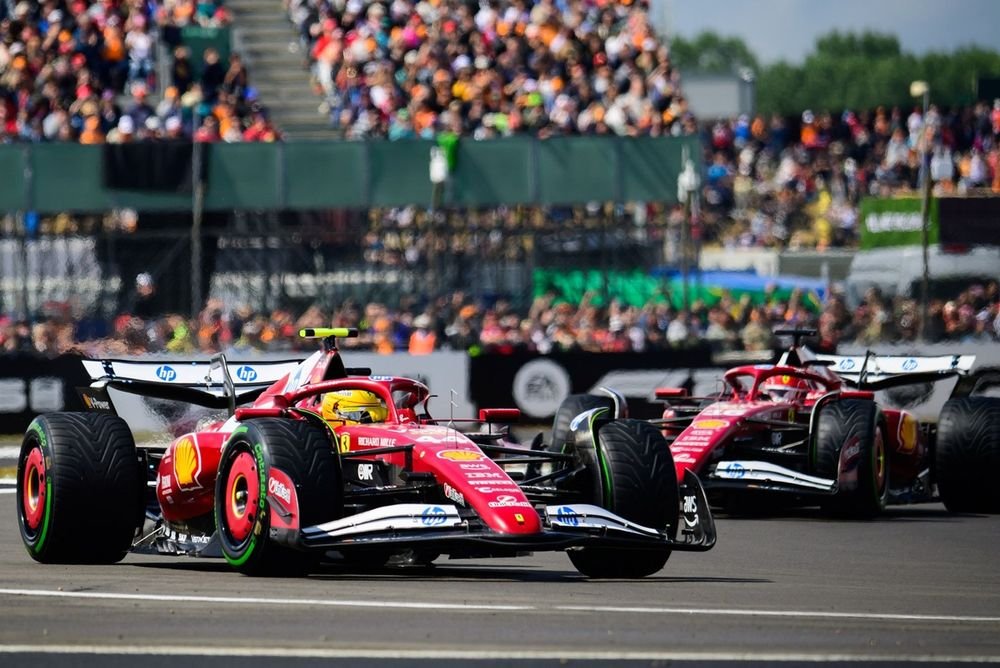
Ferrari’s telemetry reveals that the new suspension complements the Austria floor upgrade, offering a ” performance boost and lower ride setup!
Introduction
Formula 1 fans, have you noticed something a little different about Ferrari lately? If you’ve been paying attention since Austria, you might’ve seen a spark — a little more grip here, a tighter turn there. Now, thanks to fresh telemetry data, we know why. Ferrari’s latest upgrades — particularly the new suspension system working hand-in-hand with the floor update from Austria — are beginning to show real promise. The numbers don’t lie, and this time, they’re whispering good news for the Prancing Horse. The team can now set the car lower to the ground, gaining that all-important downforce. What’s even better? This updated package is worth around a tenth of a second per lap. And in F1, that’s golden.
Ferrari’s Evolving 2024 Journey
Let’s rewind a bit. Ferrari entered the 2024 season with high hopes but mixed results. While the car showed bursts of brilliance, consistency was missing. That changed when upgrades began flowing in — starting with Austria, which marked a turning point. Suddenly, their race pace looked steadier, and tire degradation dropped. Fans and pundits wondered: what’s working under the surface?
Why Telemetry Data Is the Real MVP
In the world of F1, drivers may be the stars, but telemetry data is the script. This mountain of sensor data tells engineers what’s really going on with the car. Speed, tire load, suspension movement, floor performance — it’s all captured. Recently, that data painted a beautiful picture for Ferrari. It confirmed what many suspected: the new suspension and floor are complementing each other perfectly.
What Changed in Austria?
Austria was where Ferrari debuted a refined floor design, optimized to better manage airflow under the car — a key area in F1’s ground-effect era. The new floor helped improve overall downforce and reduce drag. But at the time, the car wasn’t yet able to run as low as the team wanted due to limitations in the suspension. That’s where the next step came in.
The New Suspension: What’s So Special?
Ferrari’s new suspension isn’t just about handling bumps. It’s about precision, consistency, and flexibility. Designed to better absorb vertical movement while maintaining balance, this update allows Ferrari to run their SF-24 lower to the ground without compromising on control. This is especially vital for modern F1 cars that rely heavily on ground effect aerodynamics.
The Magic of the New Floor Concept
The floor is one of the most powerful downforce-producing components. Ferrari’s updated version creates smoother airflow and stronger suction beneath the car, acting almost like a vacuum cleaner pulling the car to the ground. Combined with better airflow management at the edges, the car becomes more planted in high-speed corners — an area where Ferrari previously struggled.
How the Suspension & Floor Work Together
Think of the floor and suspension like a tightrope walker and their balancing pole. One without the other leads to disaster. Ferrari’s new suspension helps keep the car stable enough to allow the new floor to work at peak efficiency. Without that stability, the floor’s magic disappears. Together, they create a stable, grippy platform that’s delivering real performance.
The Importance of Running Lower to the Ground
With the suspension now enabling a lower ride height, Ferrari can tap into extra downforce without worrying about bottoming out. Running low is like driving a sports car with a custom-tuned chassis — better traction, improved aerodynamics, and more control. For Ferrari, this setup could mean faster cornering and less tire wear over race distance.
What’s a Tenth Worth in Formula 1?
A tenth of a second might seem tiny to the untrained eye. But in F1, it’s the difference between P1 and P4 on the grid, or overtaking in DRS range vs. falling back into dirty air. Across a 50-lap race, that’s 5 seconds — an eternity in modern Formula 1. And this update alone brings about a tenth in lap time gain, according to internal sources.
Driver Feedback: The Real Test
Telemetry tells you the what, but drivers tell you the feel. Both Charles Leclerc and Carlos Sainz have reported increased confidence in the car — especially under braking and mid-corner stability. That’s a sign the upgrades aren’t just good on paper but also on the track.
Charles Leclerc & Carlos Sainz’s Verdict
Leclerc recently mentioned that the car is “more predictable” while Sainz praised the “balance and grip consistency.” These aren’t just offhand comments. For drivers constantly chasing tenths, predictability allows them to push the limit without second-guessing the car’s behavior — crucial during qualifying and high-pressure stints.
How It Stacks Up Against Red Bull & McLaren
Red Bull still sets the standard, but Ferrari’s updated package has narrowed the gap. McLaren, too, has taken big strides, but Ferrari is no longer playing catch-up — they’re in the mix. And with every tenth mattering more than ever in this tight midfield fight, this suspension-floor synergy could be Ferrari’s golden ticket.
Why Setup Flexibility Matters Now More Than Ever
With F1 circuits ranging from the smooth tarmac of Silverstone to the bumpy chaos of Singapore, setup flexibility is everything. Ferrari can now adapt their car more effectively to each track’s demands. The new suspension opens up more tuning options, giving the engineers more tools to unlock performance.
The Technical Team’s Silent Victory
Let’s not forget the unsung heroes — Ferrari’s technical staff. This upgrade package reflects months of R&D, simulations, and wind tunnel work. The coordination between departments — from aerodynamicists to mechanical engineers — was critical. Their silent work is now showing loud results.
What This Means for Ferrari’s 2025 Development
This success is more than a 2024 boost — it’s a blueprint for 2025. Knowing that a holistic approach to suspension and floor development works, Ferrari can now build future concepts with synergy at the core, not just chasing downforce or power individually.
Final Thoughts: Are Ferrari Back on Track?
So, is Ferrari back? It’s too early to shout from the rooftops, but all signs point to a team with renewed momentum and a car that’s finally beginning to behave the way the drivers want. If this upward trend continues, don’t be surprised to see more red on the podium — maybe even at the top step.
FAQs
1. What is telemetry data in F1 and why is it important?
Telemetry data is collected by sensors on the car to analyze everything from speed to suspension movement. It helps engineers understand performance in real time.
2. How does the new suspension help Ferrari run the car lower?
The upgraded suspension absorbs bumps better and provides a more stable platform, allowing the car to sit lower without scraping or losing balance.
3. Why is a tenth of a second improvement significant?
In F1, a tenth can be the difference between several positions on the grid or even a podium finish. It’s a huge gain in such a tightly packed field.
4. Is Ferrari’s new floor design a game-changer?
It’s certainly an improvement. Combined with the suspension, it enhances downforce and airflow, making the car more competitive across different circuits.
5. Can we expect Ferrari to win races with this upgrade?
While wins depend on many variables, the update definitely puts Ferrari in a stronger position to challenge for podiums and potentially race victories.






